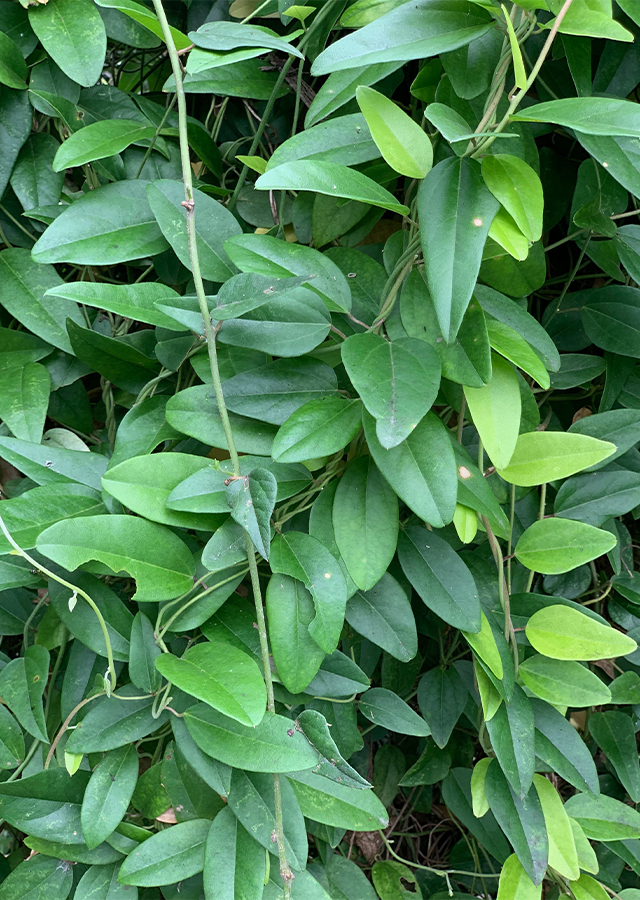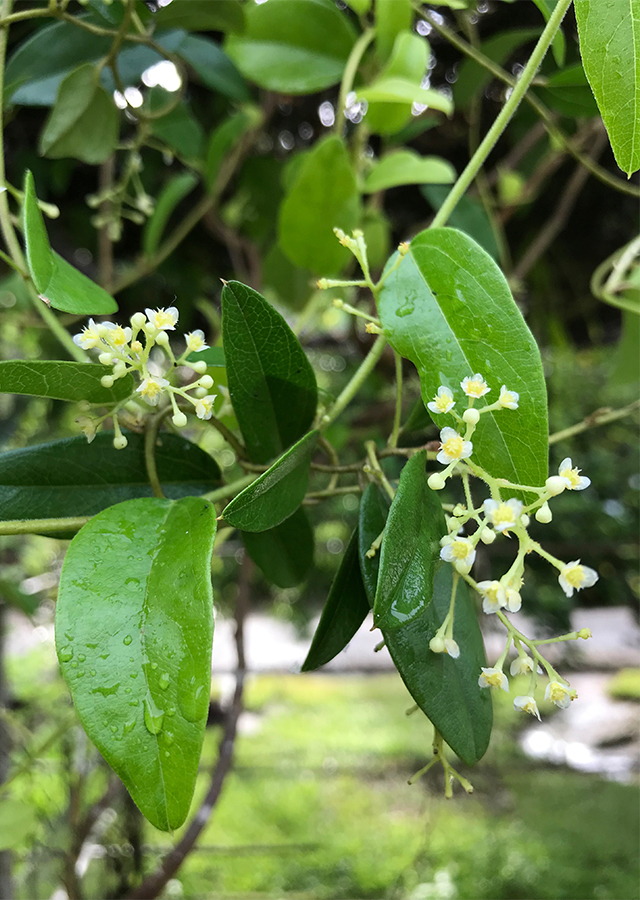Traditional Herbs from Cocculus orbiculatus
calluses
- Take \u00bc handful of leaves\u00a0oil grass jelly, \u00bc handful of fresh henna nail leaves\u00a0, 1 ??tablespoon of lime juice.
- Wash the ingredients, then grind until smooth. Add orange juice thin and mix until smooth.
- Apply the mixture to the thickened skin a day.
smoothes_the_digestive_system
- Take 50 old sudan oil grass jelly leaves, wash them clean.
- Prepare 250 ml of boiled water, squeeze the leaves using your hands with a little water first, after the leaves are crushed, add water to 250ml, squeeze again.
- Strain the grass jelly juice and grass jelly leaves. Place the grass jelly juice in a closed container and let it sit at room temperature until the texture thickens like jelly. Save and cool grass jelly in the refrigerator.
What is Cocculus orbiculatus Looks like??



Parts of Cocculus orbiculatus that could be used
- Leaves
- Roots
- Twigs
Cocculus orbiculatus Distribution
This plant is widespread in several countries, such as Nepal, China, Taiwan, Japan, Vietnam, Hawaii, Indo-China, Thailand, the Philippines, Peninsular Malaysia, Singapore, Sumatra, West Java and Central Java. Several countries, such as Vietnam and China, use this plant as a medicinal plant. Apart from being a medicinal plant, it can also be used as an ingredient for making jelly, such as in Indonesia and Thailand.Agroecology of Cocculus orbiculatus
This plant can grow in the lowlands up to an altitude of � 1,500 m above sea level. Grows wild on forest edges, ravine slopes, wild bushes. Likes a slightly shaded place and grows on other shrubs.
Morphology of Cocculus orbiculatus
- The root is bloated, when dry it is black outside, like wood inside.
- Small stem, green skin.
- Leaves are single, thin, oval sometimes shallowly 3-lobed with a pointed-rounded apex, shiny green .
- Monoecious flowers, small, arranged in bouquets located at the ends of twigs or leaf axils.
Cultivation of Cocculus orbiculatus
- Propagation is generative (seeds) and vegetative (root shoots, stem bending and stem cuttings).
- Seeds come from fruit that is ripe and has no defects. Remove the flesh of the fruit and dry the seeds before planting.
Cocculus orbiculatus, more details :
Chemical Content of Cocculus orbiculatusWattisine A, cocsoline, magnoflorine, coclaurine, daucosterol, β-sitosterol, sino-coculine, oleioyl-glycerol.
Benefits of Cocculus orbiculatus
Anodyne (relieves pain), epilepsy, anti-inflammatory, antirheumatic, depurative (blood purifier), diuretic (urine laxative), vermifuge (worm medicine), antibacterial, treats asthma, bronchitis and paralysis, medicine for stomach ache, antitumor, calluses, and exfoliates digestive system.
Simplisia of Cocculus orbiculatus
- Wash the grass jelly leaves thoroughly with running water, then sort them from impurities and then drain them.
- Chop the leaves into small pieces. Dry them in indirect sunlight for 3 days and cover with a black cloth.
- Store in a place protected from light .
Another Facts for Cocculus orbiculatus :
Synonym of Cocculus orbiculatusCebatha cuneifolia� (Miers) Kuntze, Cebatha ferrandiana� (Gaudich.) Kuntze, Cebatha integra� (Hillebr.) Kuntze
Habitus of Cocculus orbiculatus
Creepers. Annual climbing plant, reaching 2-10 m in height
Habitat of Cocculus orbiculatus
- Riverside
- Forest
- Bush Area
No comments:
Post a Comment